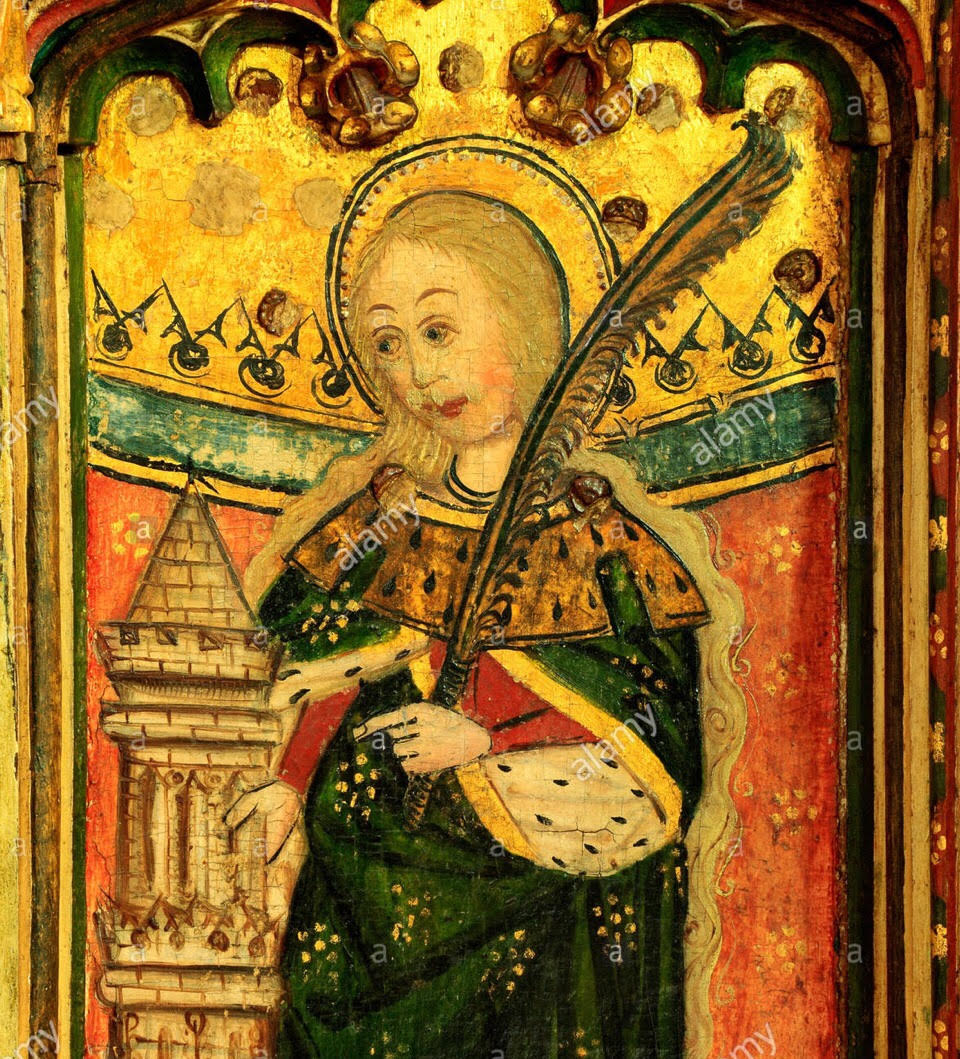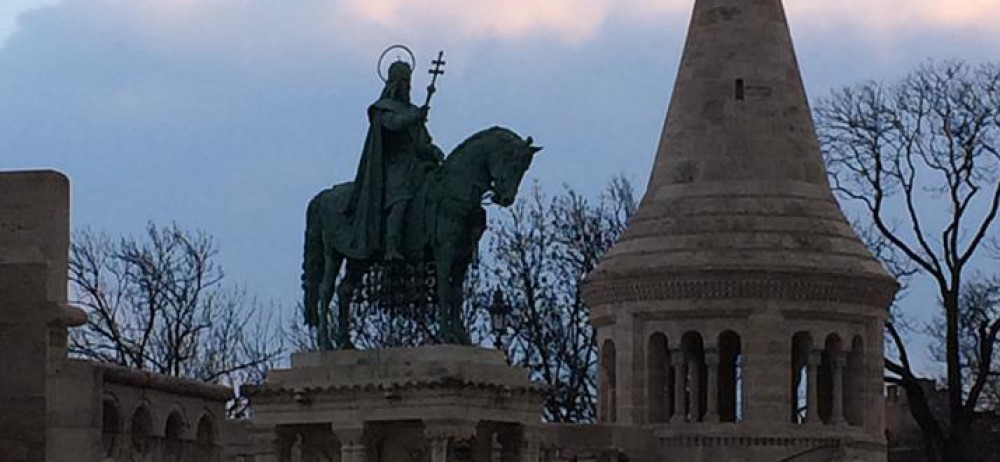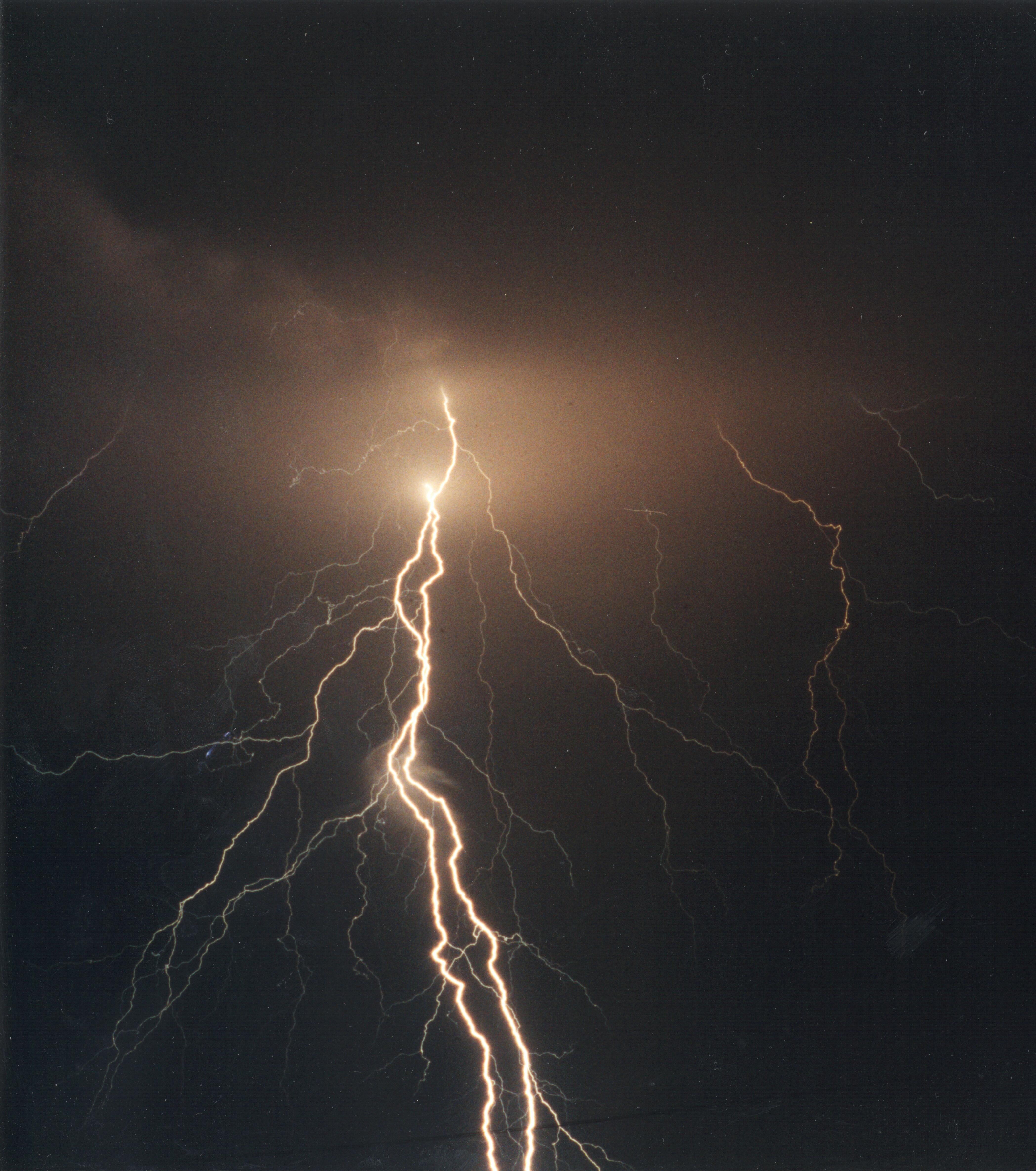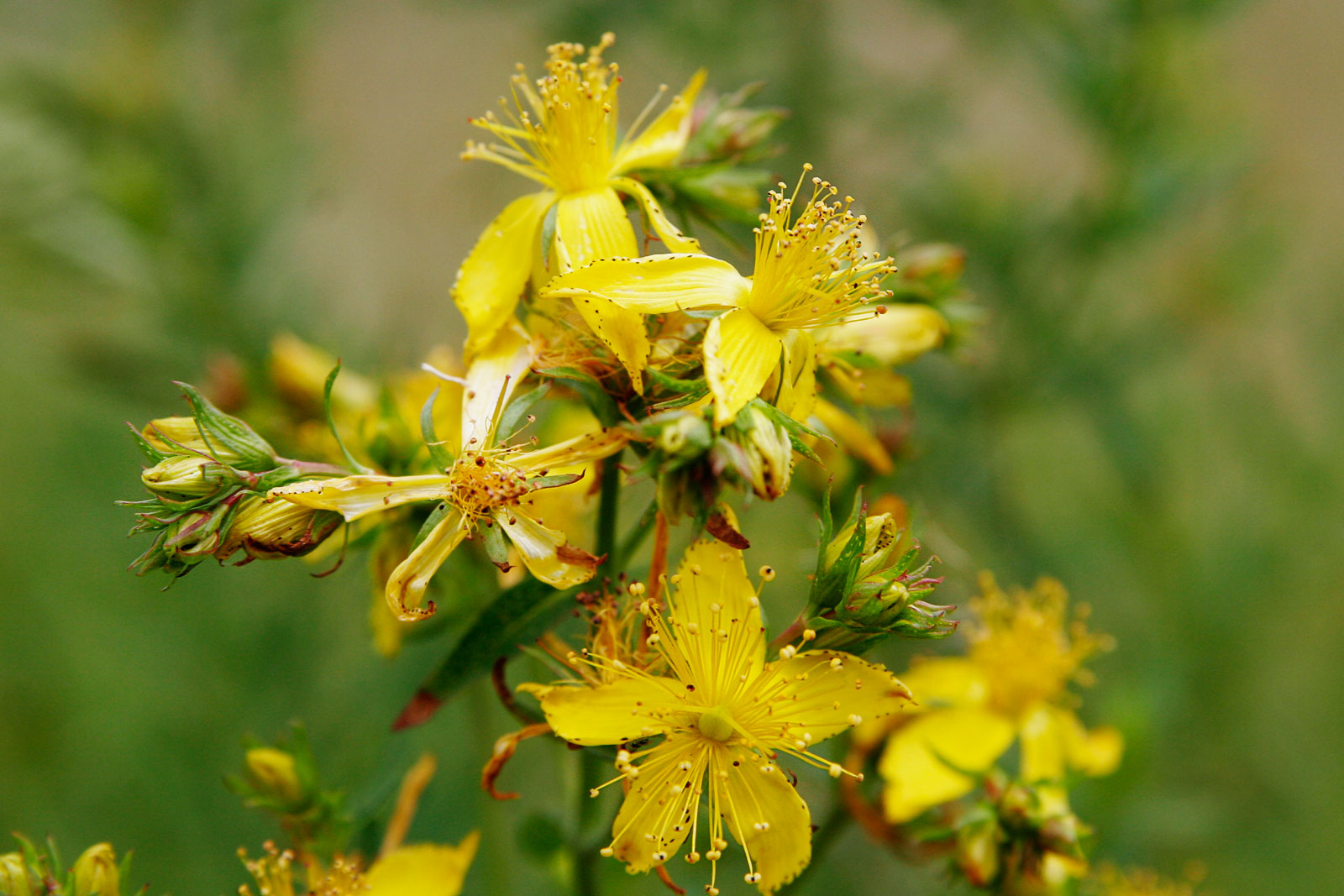
A Rood Screen painting (in Eye, Suffolk) 1480 depicts St. Barbara with her tower and palm branch.
If you die suddenly, without the time to receive Last Rites, then St. Barbara can give you everything you need. This is because Barbara herself was killed suddenly, with no warning, on December 4, AD 306. (Did you see last week’s post about St. Barbara and her branches? Look below.)
Barbara’s father was a rich merchant who built a tower with two windows for her to live in while he was away on business trips. While he was away on one trip, she became a Christian and had a third window installed in the tower as a way to honor the Holy Trinity. When her father came home and discovered that she had converted, he was so angry he drew his sword to kill her, but her prayers created an opening in the tower wall and she was miraculously transported to a mountain gorge, where two shepherds watched their flocks. Her father discovered where she was but was rebuffed by the first shepherd. However, the second shepherd betrayed her. For doing this, he was turned to stone and his flock was changed to locusts.
Dragged before the prefect of the province, who had her cruelly tortured, Barbara held true to her Christian faith. During the night, the dark prison was bathed in light and new miracles occurred. Every morning, her wounds were healed. When the jailors attempted t burn her, the torches would go out. Finally, she was condemned to death by beheading. Her father himself carried out the death-sentence. However, as punishment for this, he was struck by lightning on the way home and his body was consumed by flame.
Because of all these parts of her story, she is often depicted with a palm leaf (the symbol of victory, of martyrdom), with her tower, a lightning bolt, or a chalice (because she can give a dying person everything that a priest could in the Last Rites). She is said to especially watch over firemen, people struck by lightning, or miners and anyone who works with explosives. Within the mining and tunneling industry, as a long-standing tradition, one of the first tasks for each new mine or tunnel project is to make a small shrine to Santa Barbara at the entry to the mine or tunnel. This is often followed with a dedication and a request to Santa Barbara for protection of all who work on the project during the construction period.



